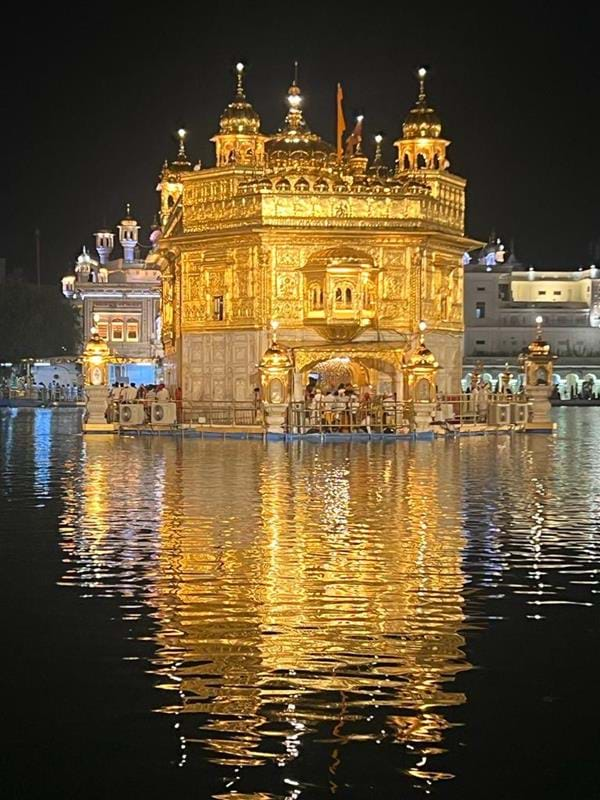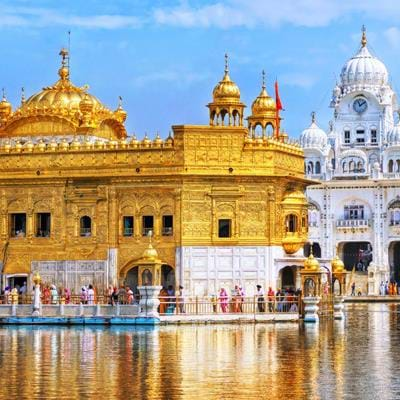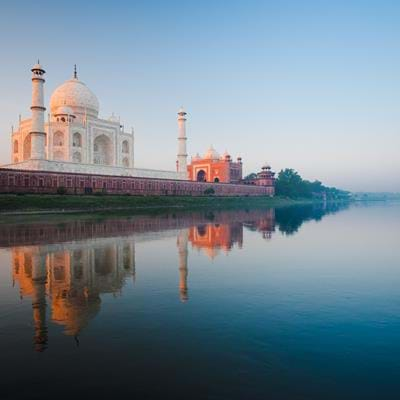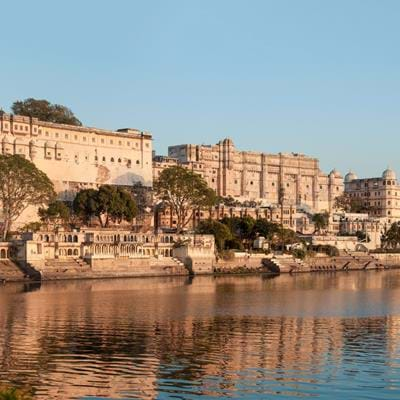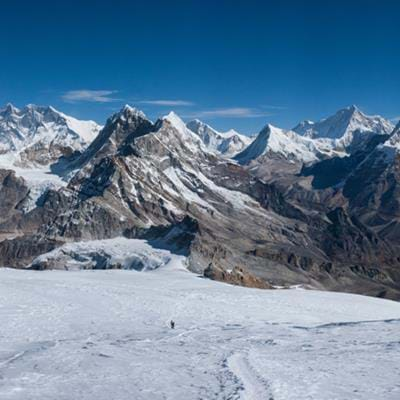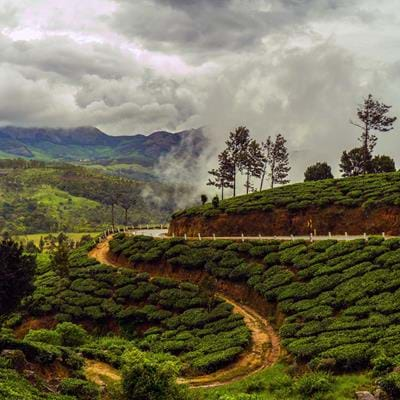India 03.09.2023 Caron Bluestone
Summer Travels in India for Families
By Caron Bluestone, who travelled through India with her young family in the summer.
When the companion voucher stars aligned and those elusive seats became ours, an epic, three-week adventure became a reality. The only people to trust with the itinerary - Transindus, a PR guru, recommended. So, in their hands, a trip of a lifetime was planned.
Requirements called for an exceptional level of expertise. Combining affordable luxury and character with unforgettable family experiences during monsoon. Why not? The advantages of travelling in school summer holidays -lower prices and fewer crowds.
A loose plan was discussed. Staying north for the weather advantage, flying into Delhi, the Golden Triangle but with a twist off the beaten track. Next, hit the Himalayan hills and the tea country of the Kangra Valley to escape the heat.
Despite the wettest monsoon in fifty years, we landed in clear skies and comfortable temperatures. A driver accompanied us, and a knowledgeable guide joined on every visit; both were invaluable. Transindus and their local partners took care of every little detail. We didn’t lose a minute of our precious time getting lost or eating in places that wouldn’t offer us something authentic or special.
The Claridges in Delhi was to be our first conventionally luxurious stay, their patisserie a delight! Then on to Agra, where the kids carved marble, having witnessed the astounding Taj Mahal at sunrise- it really is worth the early start!
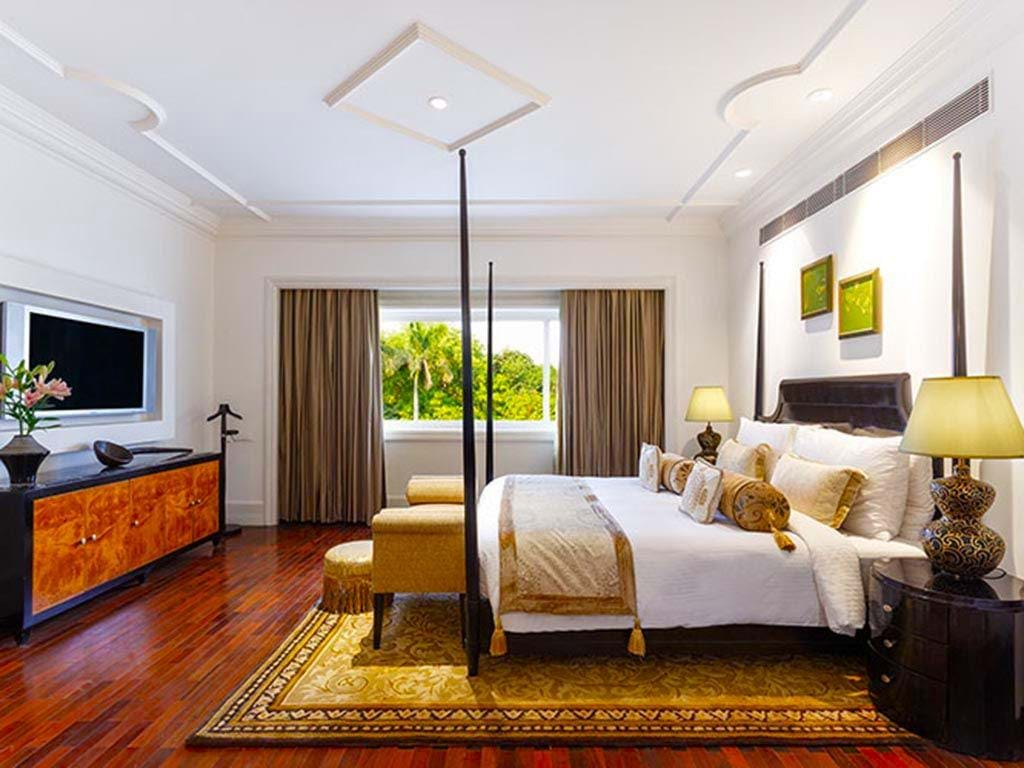
So, here’s where we take the road less travelled. We drive 60 km from Jaipur in the astonishing Rajasthani countryside, past women dressed in a symphony of colours and the cows stopping traffic to Umaid Palace, a family-owned, organic resort, their former summer shooting estate. The halls are decorated with antiques, the highest of ceilings adorned with intricate, hand-painted tiles and stained glass windows that glowed at night. Boasting eco-credential and in-house dairy, we ate like kings - mouthwatering laal maas - mutton curry, piping hot, fresh vegetable pakoras cooked during an impromptu cookery class. Spread across twenty unbelievably verdant acres, we cooled off in the shady pool, having visited the local village, watching rotis cooked from scratch over fire pits and observing real life.
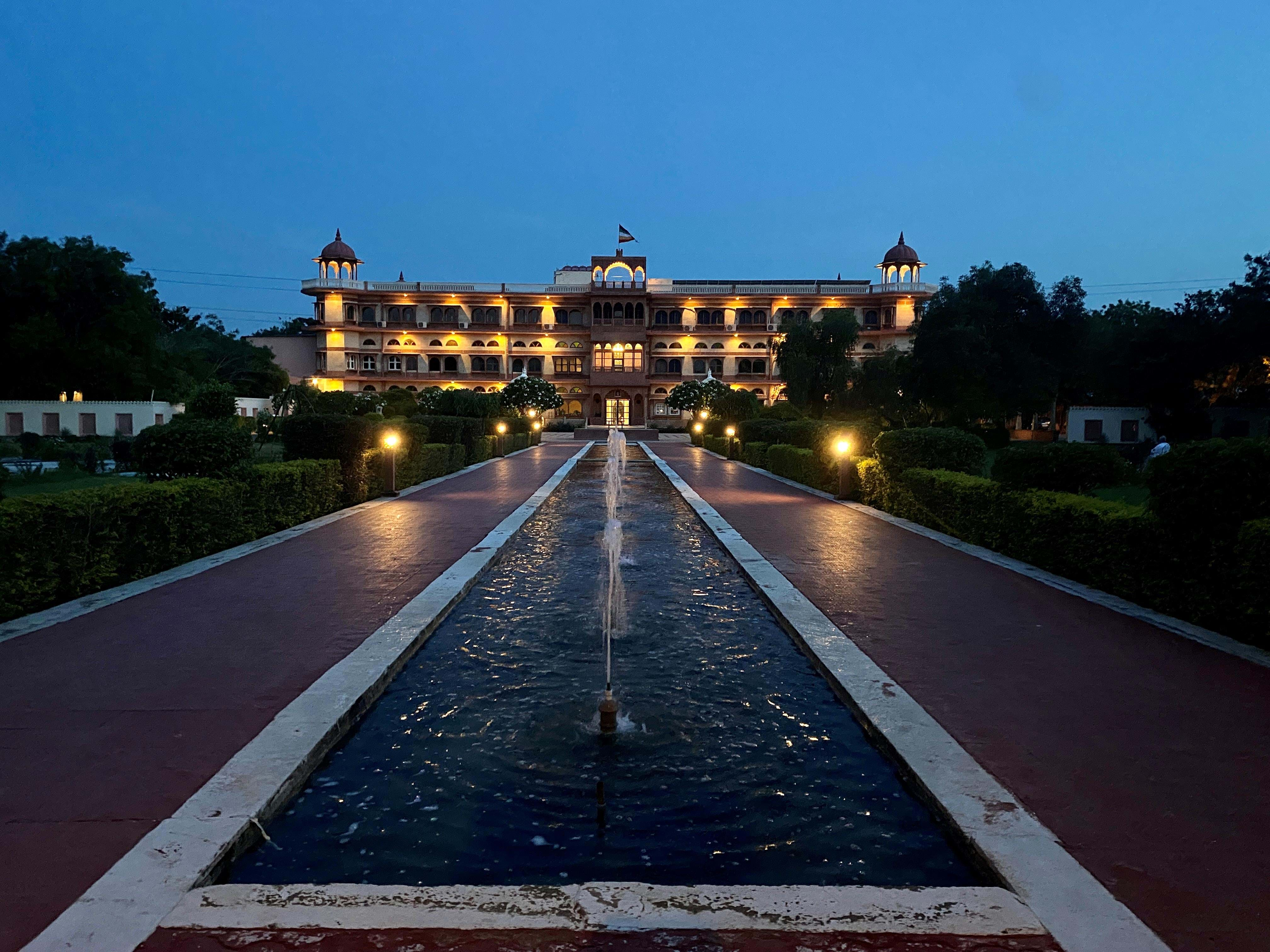
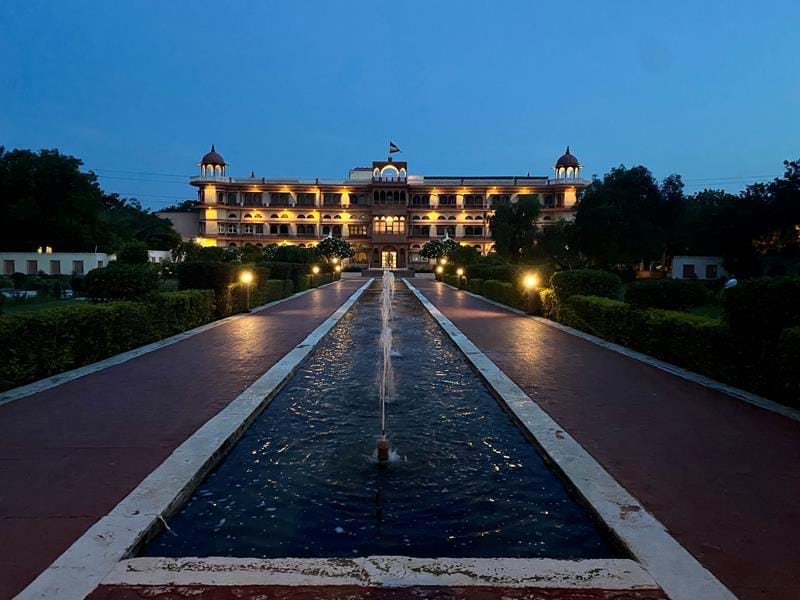
Rejuvenated, we were ready for the splendour and energy of Jaipur and the Amber Fort. Shahpura House, an ornate, beautifully restored, 19th Century royal palace and Heritage hotel, our overnight accommodation and almost as splendid as the sight and sounds of the city itself.
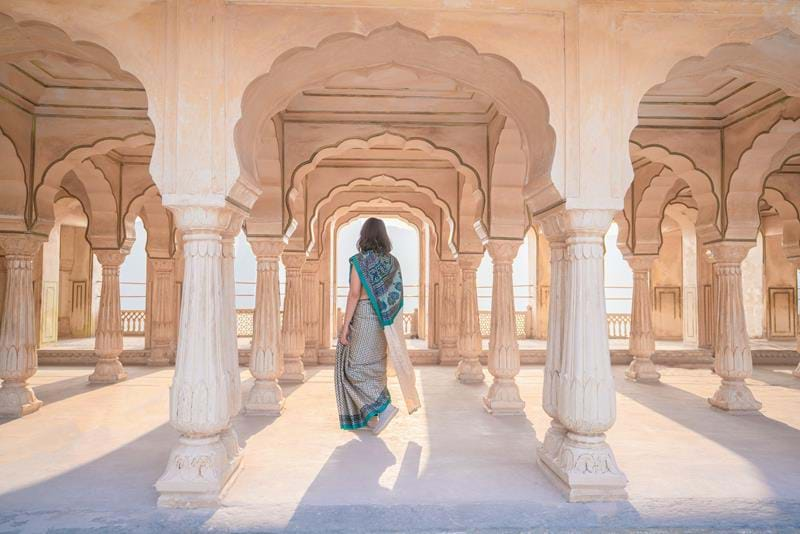
Having shopped until we dropped, we flew further north to Chandigarh, the capital of Punjab. Met by our driver for a breathtaking, somewhat hair-raising journey following landslides of the previous days, up to the largest and most famous of India’s hill stations, the former summer capital of India during British rule, where Viceroys made the mass migration each year to escape the heat, Shimla.
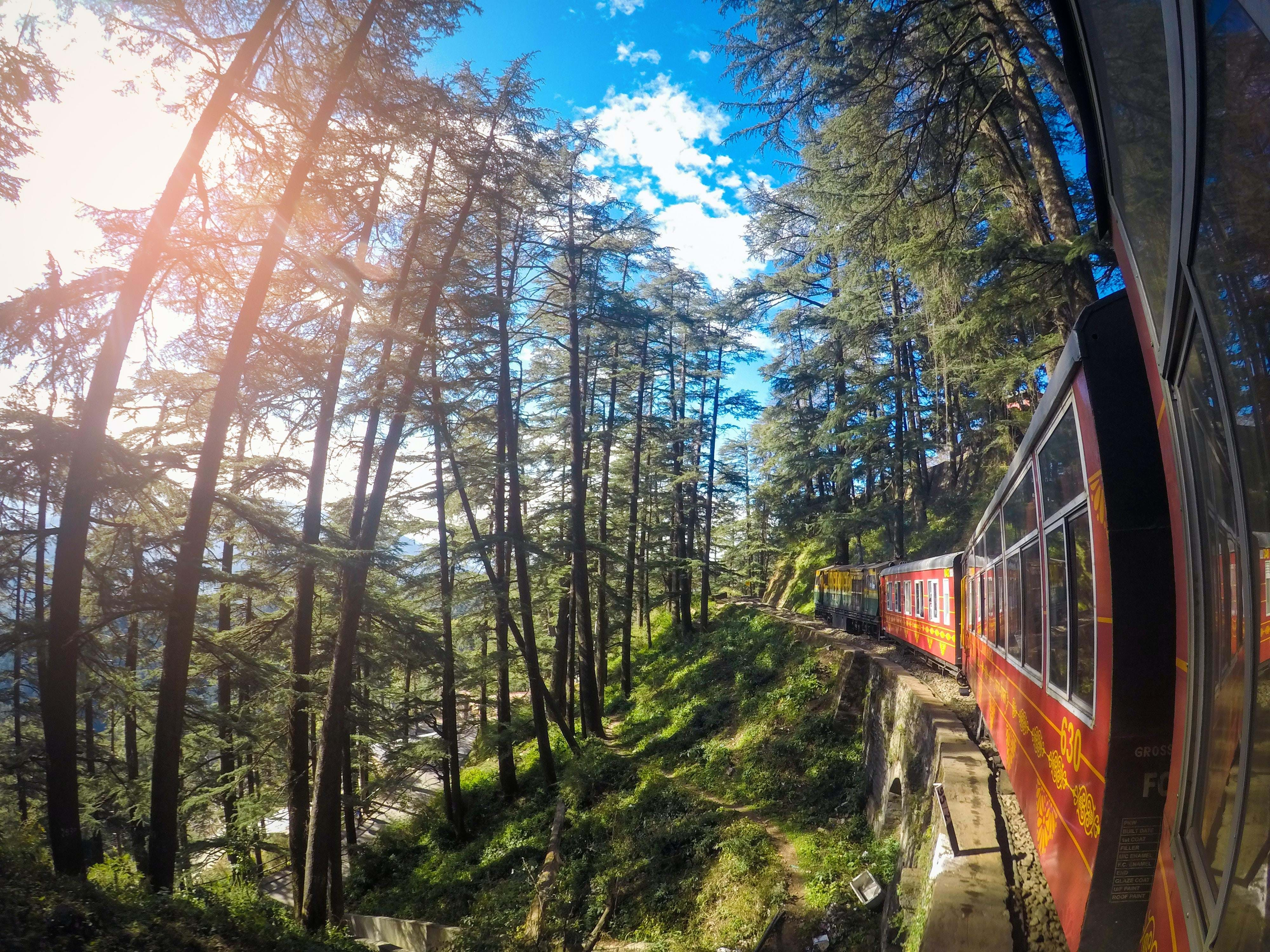
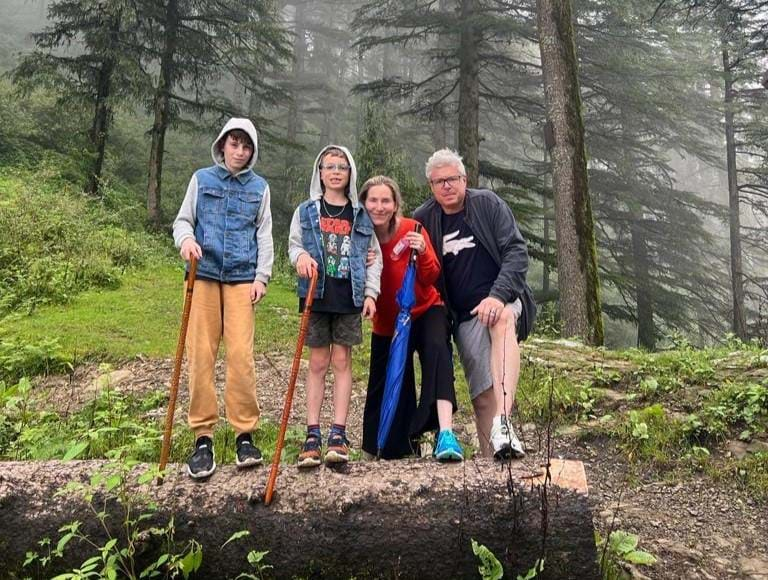
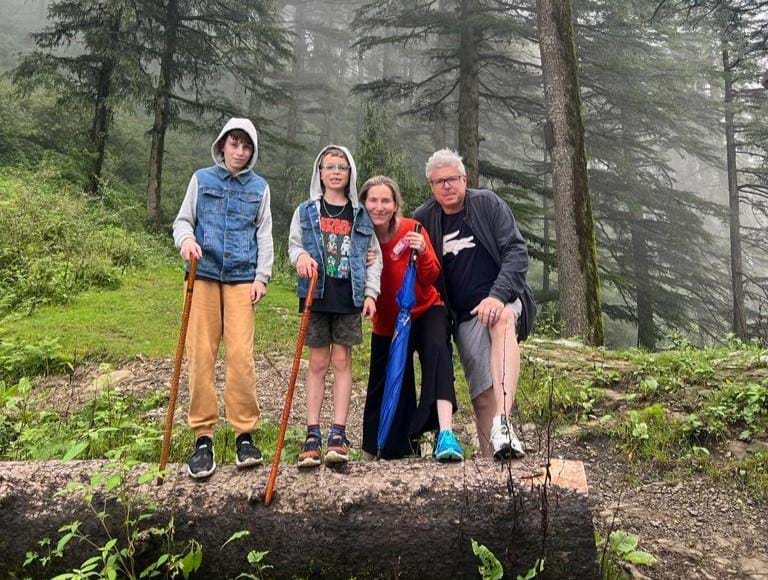
At last, literally in the clouds of the Himalayas. Dense forests inhabited by monkeys, whose eyes you were never to catch for fear of mischief, colourful buildings of every kind perched precipitously on the winding roads. The climate is noticeably cooler; the air heavy with the damp of the clouds. In the far distance, when they parted, the Himalayas appeared in their full glory. It was in Shimla that we saw our first rainfall of the trip, too. Heavy downpours as we wound our way through the narrow, colourful town bazaar, jostling and jousting with our umbrellas and sheltering in the lift station before descending to road level and our waiting driver ready to navigate the windy roads during rush hour traffic back to the hotel.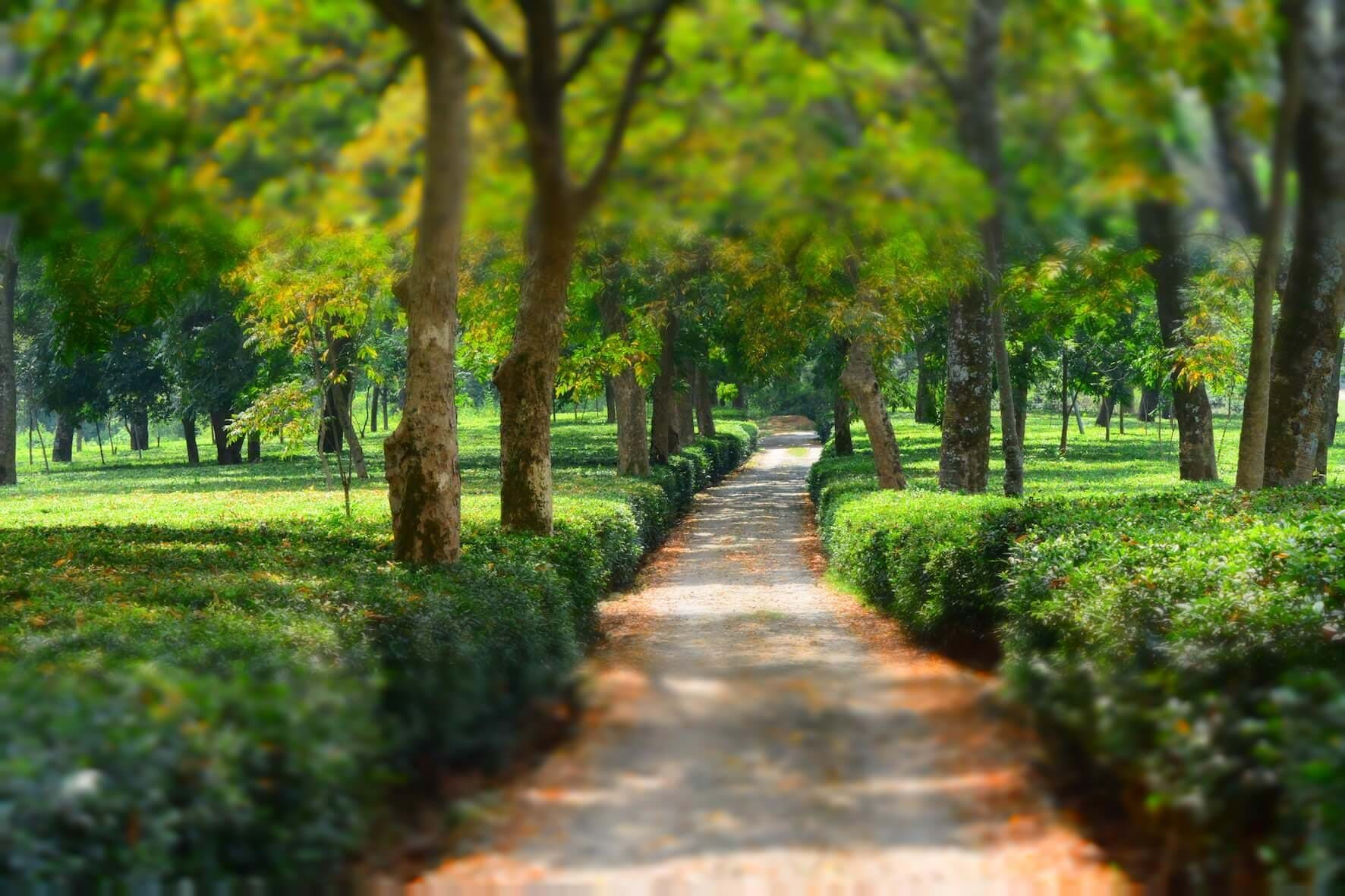
We pushed the boat out and opted to stay at the utterly romantic Wildflower Hall, the most luxurious of three Oberoi properties in Shimla. Of colonial style, sitting grandly at 2500 metres above sea level and immersed in nature. The former residence of Lord Kitchener, erstwhile commander in chief of the British army, felt more like a stately home with its landscaped gardens, a tennis court that becomes an ice rink in winter and its fabulous outdoor infinity pool.
We did the famous heritage walk, making hay whilst the sun shone, starting with a tour of the Viceregal Lodge, where the partition of India was planned. A Jacobethan masterpiece built during the tenure of Lord Dufferin, now housing the Indian Institute of Advanced Studies.
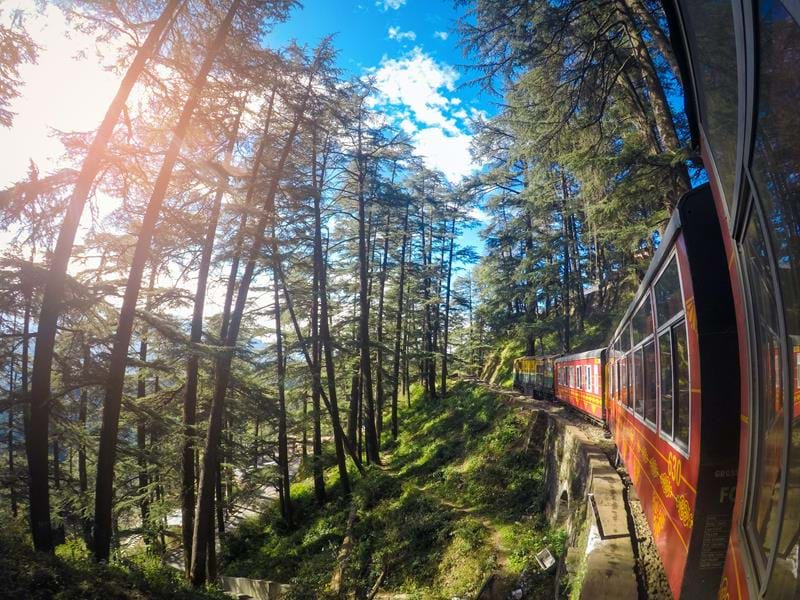
Then, down The Mall Road as clouds drew in, taking in the heart of the colonial capital of Himachal Pradesh. Shops, cafes and restaurants sit side by side with heritage buildings - the General Post Office built in neo-Gothic style in 1857, the Town Hall, Scandal Point and the Gaiety Theatre and the narrow gauge train experience. Our guide stopped for lunch at Band Stand, where locals drink chai and feast on plump samosas. Finally, back to the hotel for a guided nature walk through the fragrant cedar forest. Our 2km hike was rudely truncated, however, by a belligerent family of monkeys blocking our path, forcing us to retreat for a last soak in the pool, before a surprise private screening of Charlie and the Chocolate Factory over dinner. Oberoi at its finest!
The drive through Himachal Pradesh and the Kangra Valley to our next stop, the hill station of Palampur, was worth every second of the long journey. Pulling up at what became our true home away from home in India, the Lodge at Wah. It is an exceptional homestay on the largest working tea estate in the Kangra Valley and the family home and labour of love of Deepak Prakash and his wonderful family.
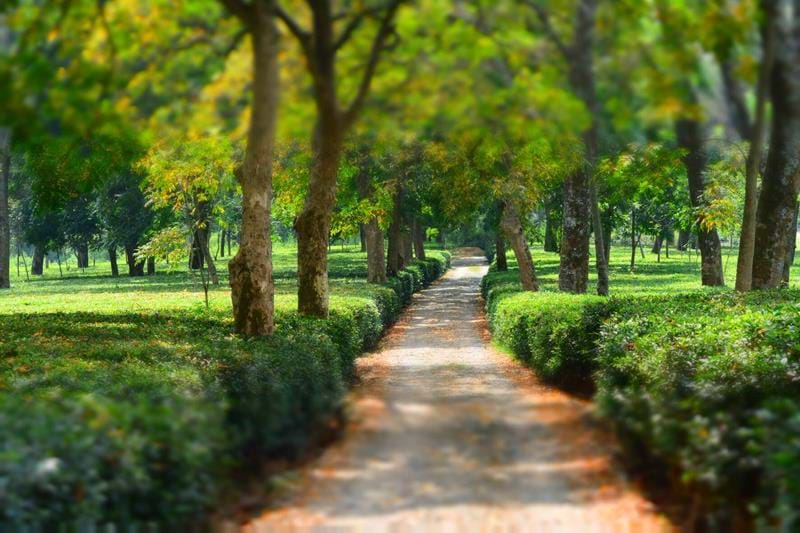
Built as a collection of cosy cottages, Deepak’s curiosity, ingenuity, passion and determination led to construction, using refined local skills and materials. From chiselled river stones to mud structures to the recycled witness stand from Palampur courthouse making an ornate balcony. Wood from the estate, polished with linseed oils, keeping it chemical-free and eco-friendly.
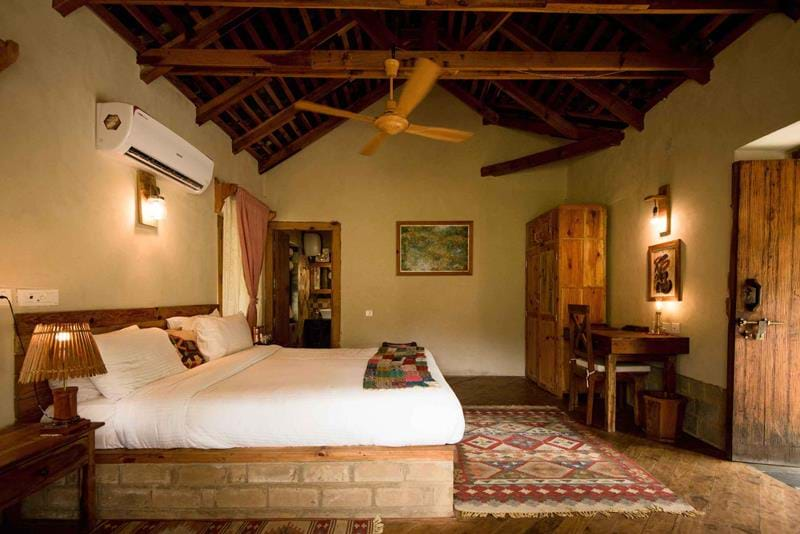
The family story and multigenerational history in tea is fascinating and Upasana and Surya, Deepak’s and daughter-in-law, together with Saloni and Gaurav and Lilly the dog made us feel immediately at home. Life here revolves around the main house, whether indoors, where the children found plenty of games and requested glass after glass of delicious iced tea, or outside in the multifaceted garden, playing cricket, painting stones or spotting birds.
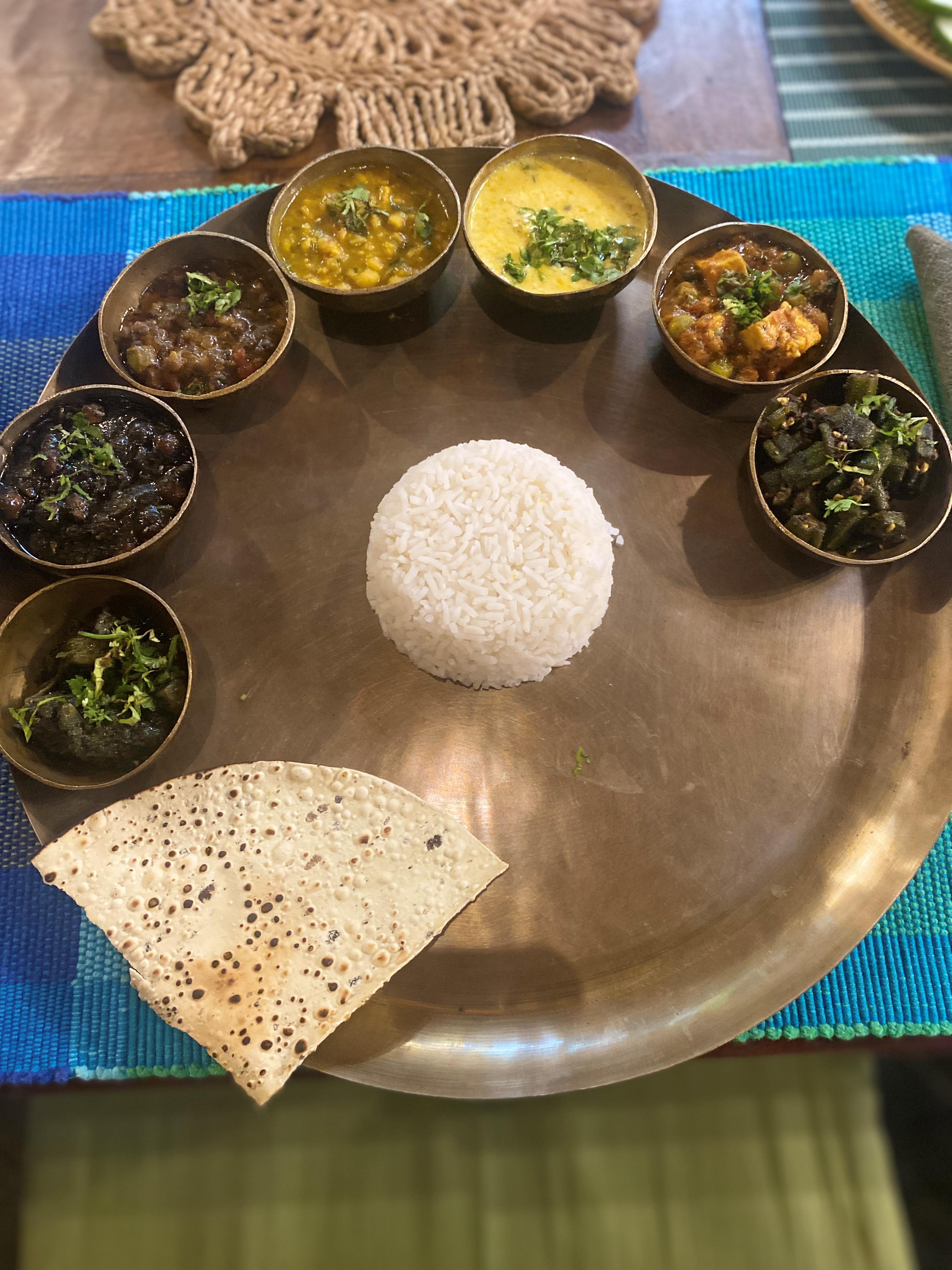
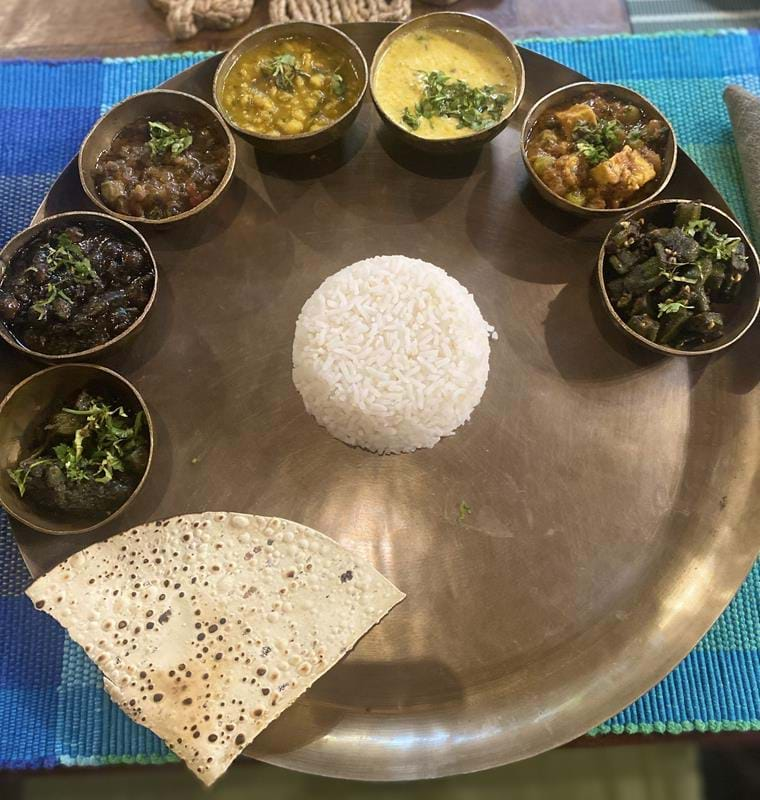
Meals were communal, the food spectacular and the company a pleasure. We relaxed for the most part of our four-night stay. A massage at the local ayurvedic hospital, a visit to Palampur, a bustling, colourful market town with a mountain backdrop, a pottery lesson in a nearby artist village, followed by lunch at the tea estate cafe, sitting in the cool of the trees watching the pickers at work. The final day brought a tea tasting and tour of the factory.
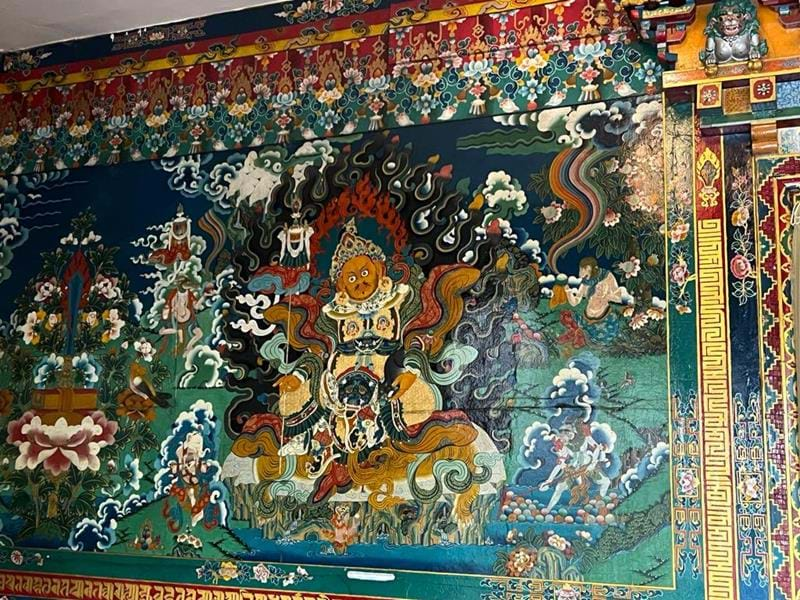
Sad to leave but excited to visit the home of the Dalai Lama and the Tibetan Government in exile, we ascended seemingly higher and higher; through the lively, cobbled streets of Dharamshala and to Justa Birding Resort. Opening our balcony door, clouds drifted in. Across the Valley - Mcleod Ganj - known as ‘Little Lhasa’ for its large Tibetan population. Buddhist temples and monasteries were flying those familiar flags that I’d seen on TV so many times. Here in the shadow of the snow-capped Dhauladhar mountains, a hikers paradise, we spent an unforgettable morning visiting the children at the Tibetan Children's SOS Village. A residential school for orphans from the Chinese-occupied Tibet.
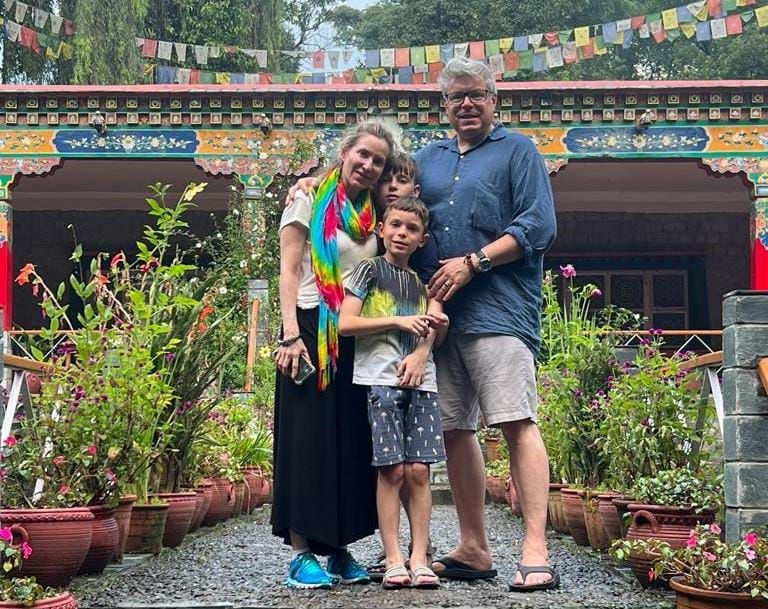
At Main Temple, the Tsug-Lag-Kang and the most important Tibetan Buddhist temple outside of Tibet, my children marvelled at the magnificent gilded bronze Buddha and looked on, transfixed, as students performed the Tibetan rites. We ended at the Norbulingka Institute. A trip highlight for me. Built in traditional architectural style, Norbulingka is all about preserving centuries of Tibetan tradition. Hundreds of apprentices live and study Tibetan art, from woodcarving to painting to metal sculpture.
We ended our journey in Amritsar watching the Golden Temple glisten in the balmy Night. One last opportunity for adventure and the forty minute drive to the Wagah and the India- Pakistan border to experience the changing of the guards ceremony. An unbelievable spectacle; a staged march-off between the two nations, the Indian crowd enthused by a soldier whose performance was more akin to Freddie Mercury, clapping to the final act of the most memorable musical, before the border was closed for the day and flags were ceremoniously lowered to the cheers of the crowd.
